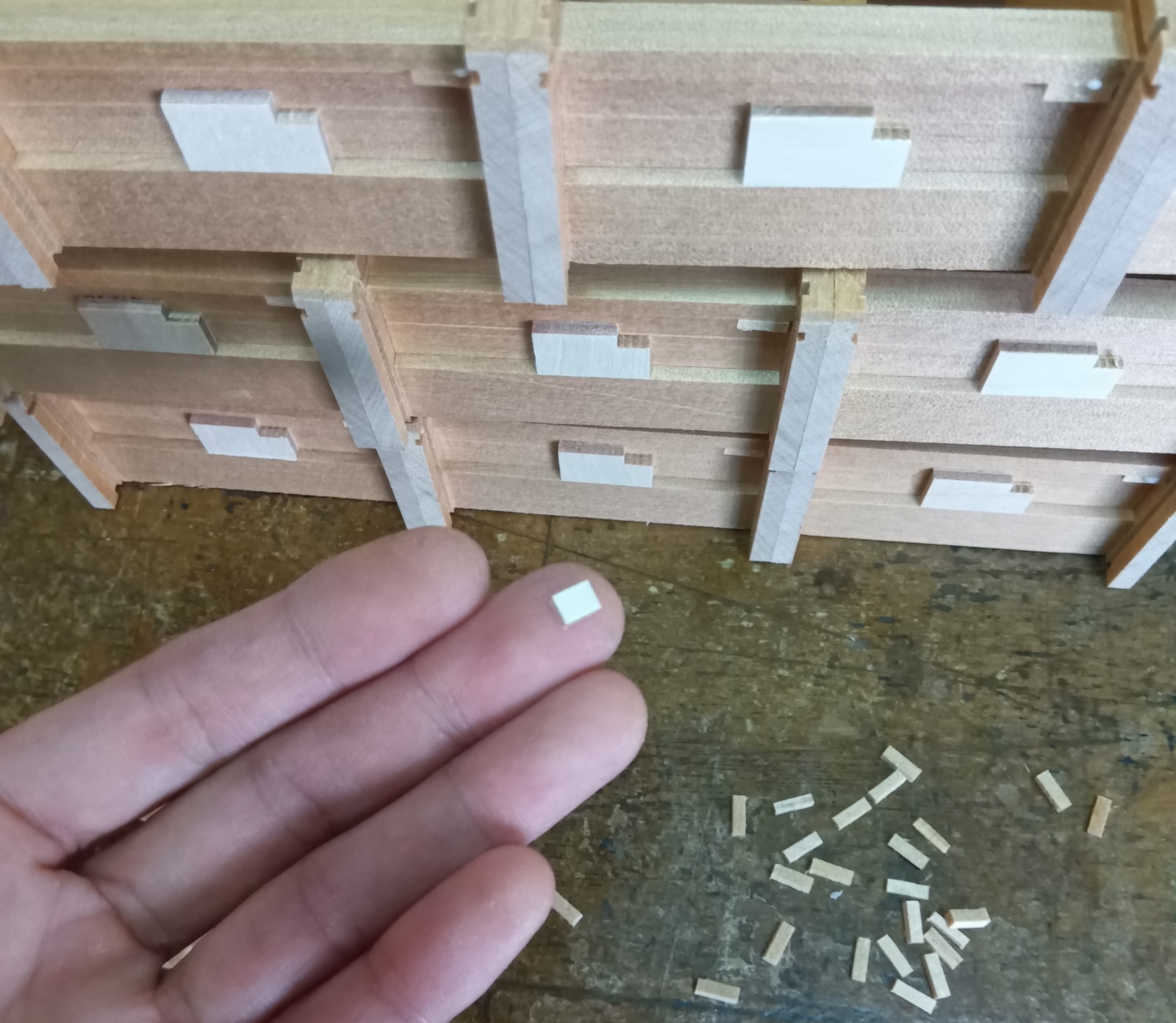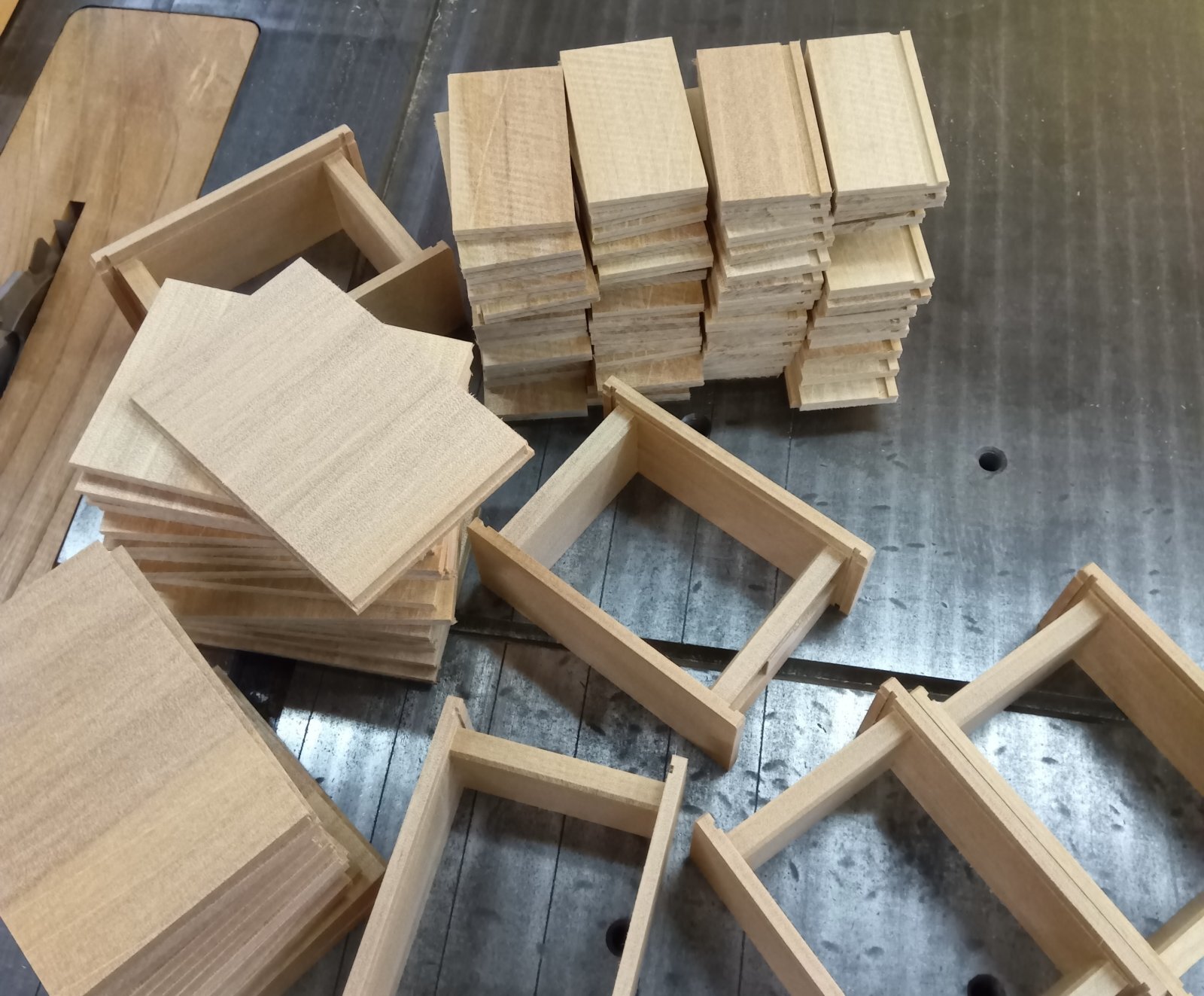4 sun puzzle boxes
Japan is currently enjoying a three-day weekend, with today being Monday. Today is a national holiday called "Sports Day." This holiday is designed to create a long weekend by combining it with Saturday and Sunday. In the past, October 10th was known as "Physical education's day," and it was a holiday regardless of the day of the week. When I was a child (back in my school days), schools would hold sports festivals around October 10th. The weather was usually pleasant, with many clear and sunny days, so it was an ideal time for such events. However, these days, due to climate change, it seems that the weather is still too hot around this time. As a result, fewer schools hold outdoor sports festivals. There have been concerns about children suffering from heatstroke, and many events have been canceled for safety reasons. By the way, it's hot today too!😂
Currently, I am working on the production of 4-sun 12-step and 14-step Japanese puzzle boxes. The photo shows the frames being assembled and parts being attached. This time, I am making both the 12 and 14-step boxes at the same time since they can be made with the same parts. About half of these boxes are orders from overseas stores. None of the boxes in this batch will feature traditional yosegi type. Instead, they are all made from natural wood and natural wood sheet.
The 4-sun size has now become the standard size for Japanese puzzle boxes, but for me, it was a size I hadn't made for a long time. I think I started making them about 10 or 12 years ago. For the first 10 years or so after I began making Japanese puzzle boxes, I didn’t work on the 4-sun size. Many craftsmen were already making 4-sun boxes, and I deliberately avoided it so as not to interfere with their work, as I was still a newcomer. The 4-sun boxes were likely in high demand and sold well, so they were probably a key product for the more experienced craftsmen. However, in recent years, the number of producers has decreased, and stock shortages seem to be an issue. That’s why I started making them, at the request of the shops in Hakone.
The 12 and 14-step mechanisms are standard of 4-sun size box. The difference between the two is a small part, as seen in the photo on my fingertip. By adding this part, the number of moves increases by two, turning a 12-step box into a 14-step box. While the exact dimensions of the box may vary slightly depending on the craftsman, I make mine in the almost standard size. However, I feel that the width of the side panels (which determine the box’s height) in the 4-sun structure might be a bit too small. This smaller width makes the surface area for attaching design panels, such as yosegi, on the outside unstable, and more prone to warping. As a solution, I started making what I consider my "ideal 4-sun size box" — the 4.2-sun puzzle box. It’s slightly larger overall than the standard 4-sun size.
In addition to this, today I also made the aruki (sliding panels) for the 4-sun boxes (photo). However, I’ve only made them so far, and the assembly will likely be done from tomorrow onwards.
Currently, I am working on the production of 4-sun 12-step and 14-step Japanese puzzle boxes. The photo shows the frames being assembled and parts being attached. This time, I am making both the 12 and 14-step boxes at the same time since they can be made with the same parts. About half of these boxes are orders from overseas stores. None of the boxes in this batch will feature traditional yosegi type. Instead, they are all made from natural wood and natural wood sheet.
The 4-sun size has now become the standard size for Japanese puzzle boxes, but for me, it was a size I hadn't made for a long time. I think I started making them about 10 or 12 years ago. For the first 10 years or so after I began making Japanese puzzle boxes, I didn’t work on the 4-sun size. Many craftsmen were already making 4-sun boxes, and I deliberately avoided it so as not to interfere with their work, as I was still a newcomer. The 4-sun boxes were likely in high demand and sold well, so they were probably a key product for the more experienced craftsmen. However, in recent years, the number of producers has decreased, and stock shortages seem to be an issue. That’s why I started making them, at the request of the shops in Hakone.
The 12 and 14-step mechanisms are standard of 4-sun size box. The difference between the two is a small part, as seen in the photo on my fingertip. By adding this part, the number of moves increases by two, turning a 12-step box into a 14-step box. While the exact dimensions of the box may vary slightly depending on the craftsman, I make mine in the almost standard size. However, I feel that the width of the side panels (which determine the box’s height) in the 4-sun structure might be a bit too small. This smaller width makes the surface area for attaching design panels, such as yosegi, on the outside unstable, and more prone to warping. As a solution, I started making what I consider my "ideal 4-sun size box" — the 4.2-sun puzzle box. It’s slightly larger overall than the standard 4-sun size.
In addition to this, today I also made the aruki (sliding panels) for the 4-sun boxes (photo). However, I’ve only made them so far, and the assembly will likely be done from tomorrow onwards.

